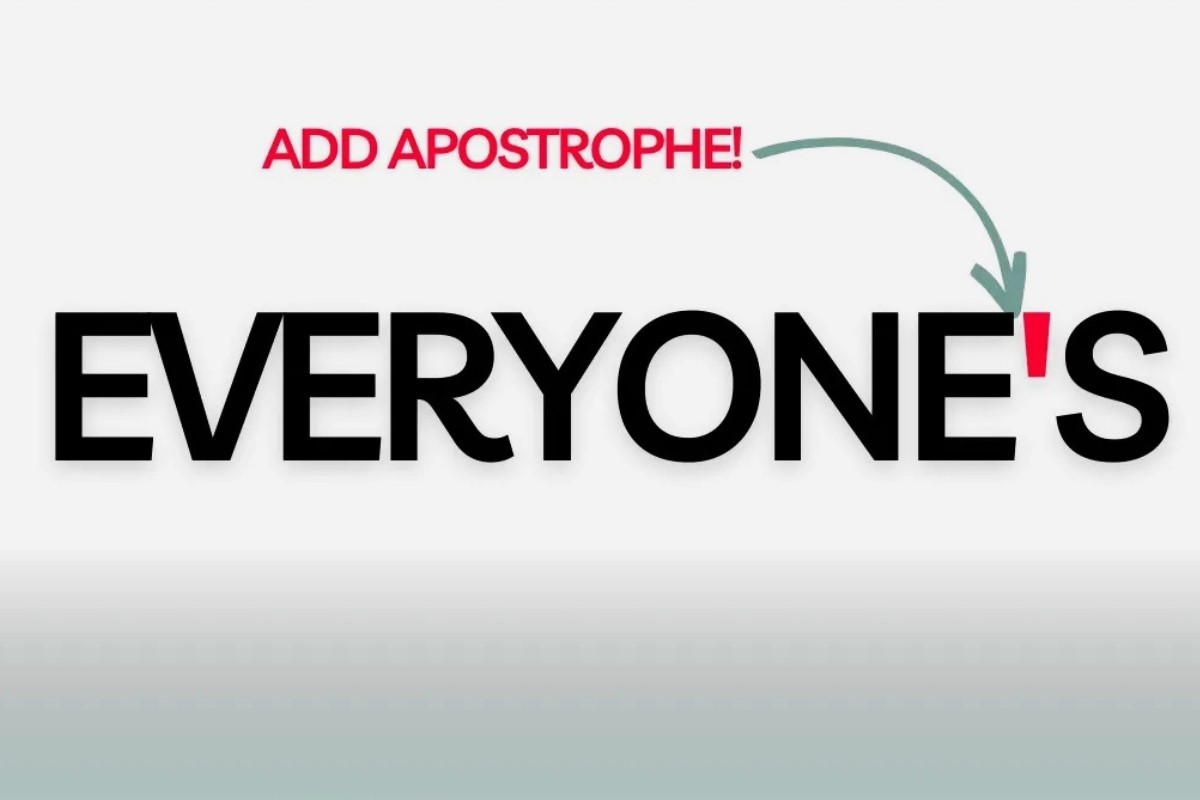Home>Health and Wellness>5 Signs You Should Rush Your Toddler To Urgent Care For A Fever


Health and Wellness
5 Signs You Should Rush Your Toddler To Urgent Care For A Fever
Published: February 12, 2024
If your toddler has a fever, watch out for these 5 signs that indicate a trip to urgent care may be necessary. Prioritize your child's health and wellness with prompt medical attention.
(Many of the links in this article redirect to a specific reviewed product. Your purchase of these products through affiliate links helps to generate commission for Noodls.com, at no extra cost. Learn more)
Table of Contents
Sign 1: High Fever that Doesn't Respond to Medication
When your toddler is running a high fever, it can be a distressing experience for any parent. While fevers are a natural response of the body to fight off infections, a high fever that doesn't subside despite medication can be a cause for concern. It's important to recognize the signs that indicate when a fever requires urgent medical attention.
A fever is generally considered high when it reaches 102 degrees Fahrenheit or higher. If your toddler's fever persists at this level or continues to rise even after administering fever-reducing medication such as acetaminophen or ibuprofen, it could be a sign of a more serious underlying condition. In such cases, seeking prompt medical attention at an urgent care facility is crucial.
A high fever that doesn't respond to medication may indicate a more severe infection, such as pneumonia or a urinary tract infection, which requires medical intervention. Additionally, certain viral infections, such as the flu or COVID-19, can cause persistent high fevers that necessitate professional evaluation and treatment.
It's important to monitor your toddler's fever closely and keep track of any accompanying symptoms, such as irritability, lethargy, or difficulty breathing. If your child appears unusually ill or experiences seizures due to the high fever, seeking urgent medical care is imperative to ensure their well-being.
In summary, a high fever that doesn't subside despite medication warrants immediate attention from healthcare professionals. By recognizing this sign and taking prompt action, you can ensure that your toddler receives the necessary medical care to address the underlying cause of the fever and prevent any potential complications.
Read more: 5 Signs A Wendigo Is Hunting You
Sign 2: Difficulty Breathing or Rapid Breathing
When it comes to the health of your toddler, respiratory issues demand immediate attention. Difficulty breathing or rapid breathing in toddlers can be indicative of various underlying health concerns, ranging from mild respiratory infections to more severe conditions that require urgent medical intervention.
If you notice that your toddler is experiencing labored breathing, characterized by visible chest retractions or flaring nostrils, it's crucial to seek medical assistance promptly. Additionally, rapid breathing, where your child is taking more breaths per minute than usual, can be a cause for concern. Normal respiratory rates for toddlers typically range from 20 to 30 breaths per minute. If your child's breathing exceeds this range, it may signify an underlying respiratory issue that necessitates urgent evaluation by healthcare professionals.
Respiratory distress in toddlers can be triggered by various factors, including respiratory infections such as bronchiolitis or pneumonia, allergic reactions, asthma exacerbations, or even foreign object aspiration. In some cases, rapid breathing can also be a sign of systemic illnesses that affect the respiratory system, such as sepsis or metabolic acidosis.
It's important to observe your toddler's overall condition when assessing their breathing difficulties. If your child appears lethargic, is unable to speak due to breathlessness, or exhibits a bluish discoloration around the lips or fingertips, immediate medical attention is imperative. These signs may indicate a significant decrease in oxygen levels, requiring urgent intervention to stabilize your toddler's respiratory function.
In summary, difficulty breathing or rapid breathing in toddlers should never be overlooked. Promptly seeking medical care at an urgent care facility is essential to assess the underlying cause of the respiratory distress and ensure appropriate management. By recognizing these signs and taking swift action, you can safeguard your toddler's respiratory health and well-being.
Sign 3: Unusual Rash or Skin Discoloration
Noticing an unusual rash or skin discoloration on your toddler can be a cause for immediate concern. While rashes are common in children and often caused by minor irritants or viral infections, certain types of rashes or discoloration may signal a more serious underlying condition that requires urgent medical attention.
When assessing your toddler's skin, it's important to be vigilant for rashes that are accompanied by other concerning symptoms, such as fever, lethargy, or difficulty breathing. Additionally, specific characteristics of the rash, such as its appearance, distribution, and associated pain or itching, can provide valuable insights into its potential causes.
One of the concerning types of rashes is petechiae, which are tiny, red or purple spots that appear on the skin due to bleeding under the skin. Petechiae can be indicative of serious conditions such as meningitis, sepsis, or certain types of leukemia. If you notice petechiae on your toddler's skin, particularly in conjunction with other symptoms such as fever, headache, or neck stiffness, it's crucial to seek immediate medical evaluation.
Another alarming type of rash is a rapidly spreading, purplish rash that doesn't fade when pressed. This can be a sign of meningococcal infection, a severe bacterial illness that requires urgent medical intervention. Meningococcal rash is often accompanied by symptoms such as high fever, severe headache, and neck stiffness, necessitating immediate assessment and treatment at an urgent care facility.
In some cases, skin discoloration may manifest as a bluish or grayish tint, particularly around the lips, fingertips, or nail beds. This can indicate a decrease in oxygen levels in the blood, known as cyanosis, which may result from respiratory or circulatory issues. Cyanosis warrants prompt medical evaluation to identify and address the underlying cause, ensuring adequate oxygenation and circulation for your toddler.
Furthermore, certain rashes that are accompanied by blistering, ulceration, or intense itching may signify serious skin infections, allergic reactions, or even autoimmune conditions. These require thorough assessment and management by healthcare professionals to prevent potential complications and alleviate discomfort for your toddler.
In summary, recognizing unusual rashes or skin discoloration in your toddler and understanding their potential implications is crucial for prompt and appropriate medical intervention. By seeking urgent care when observing these concerning skin changes, you can ensure that any underlying health issues are promptly addressed, safeguarding your toddler's well-being.
Sign 4: Severe Vomiting or Diarrhea
Severe vomiting or diarrhea in toddlers can be alarming for parents and caregivers, signaling potential underlying health issues that require urgent medical attention. While occasional episodes of vomiting and diarrhea are common in children, severe and persistent symptoms can lead to dehydration and electrolyte imbalances, posing significant risks to your toddler's well-being.
When assessing severe vomiting, it's essential to consider the frequency and intensity of the episodes. If your toddler is unable to retain any fluids or is experiencing projectile vomiting, it may indicate a more serious condition such as a gastrointestinal infection, food poisoning, or even an obstruction in the digestive tract. Additionally, if the vomit contains blood or appears dark and coffee-ground-like, it could signify internal bleeding, necessitating immediate medical evaluation.
Similarly, severe diarrhea characterized by frequent, watery stools can rapidly lead to dehydration in toddlers. Dehydration can manifest through symptoms such as dry mouth, sunken eyes, decreased urine output, and lethargy. In severe cases, dehydration can compromise vital organ function and necessitate urgent medical intervention to restore fluid and electrolyte balance.
Moreover, persistent diarrhea accompanied by blood or mucus in the stool may indicate inflammatory bowel conditions, bacterial infections, or parasitic infestations that require thorough assessment and management by healthcare professionals.
It's important to monitor your toddler's overall condition when assessing severe vomiting or diarrhea. If your child appears lethargic, irritable, or exhibits signs of significant distress, seeking urgent medical care is imperative to address the underlying cause and prevent complications associated with fluid and electrolyte imbalances.
In summary, recognizing the severity and persistence of vomiting and diarrhea in toddlers is crucial for prompt medical intervention. By seeking urgent care when observing these concerning gastrointestinal symptoms, you can ensure that your toddler receives the necessary evaluation and treatment to address the underlying cause and prevent dehydration-related complications.
Sign 5: Unresponsiveness or Extreme Lethargy
When a toddler displays unresponsiveness or extreme lethargy, it can be a distressing and potentially critical indication of an underlying health issue. Unresponsiveness refers to a lack of reaction or response to stimuli, while extreme lethargy manifests as an overwhelming and abnormal lack of energy or alertness. These signs can be indicative of various serious medical conditions that necessitate immediate medical attention.
Unresponsiveness in toddlers can present as a lack of response to familiar voices, absence of eye contact, or failure to engage in typical activities or play. It may be accompanied by altered consciousness, such as disorientation, confusion, or unsteadiness. These symptoms can be indicative of neurological issues, severe infections, head trauma, or metabolic disturbances, all of which require urgent evaluation by healthcare professionals.
Extreme lethargy, characterized by a profound and unusual lack of energy, can manifest as excessive sleepiness, reluctance to move or interact, or an inability to maintain wakefulness. When a toddler exhibits extreme lethargy, it may signify systemic illnesses, such as sepsis, metabolic disorders, or significant electrolyte imbalances. Additionally, certain respiratory or circulatory issues can lead to decreased oxygenation and circulation, contributing to extreme lethargy in toddlers.
It's crucial for parents and caregivers to recognize the severity of unresponsiveness or extreme lethargy in toddlers and seek immediate medical care. These signs may indicate critical conditions that require urgent intervention to stabilize the child's health and prevent potential complications. Prompt medical evaluation is essential to identify the underlying cause of these symptoms and initiate appropriate management to ensure the well-being of the toddler.
In summary, recognizing unresponsiveness or extreme lethargy in toddlers as urgent medical concerns is vital for prompt intervention. By seeking immediate medical attention when observing these alarming signs, parents and caregivers can ensure that their toddler receives the necessary assessment and care to address the underlying health issues and safeguard their well-being.















